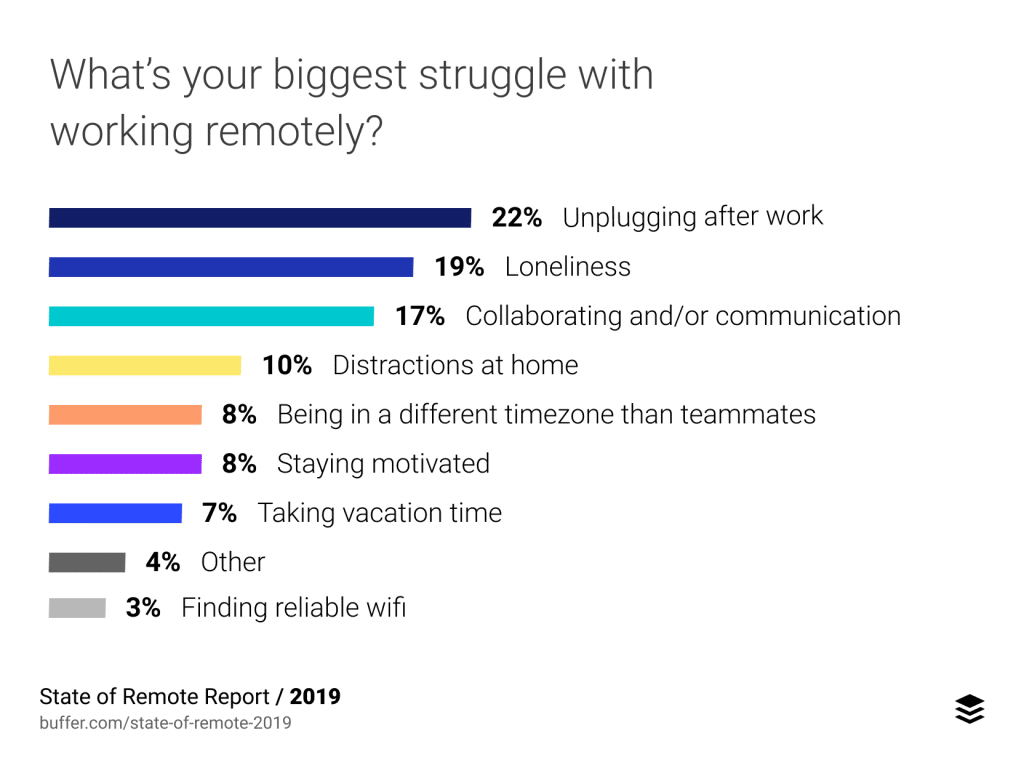A concise guide to supporting a remote workforce

While it’s easy to think of remote work as a dream come true for many employees, studies have proven that it isn’t exactly the bed of roses many thought it would be. The challenges of working from home range from missing the daily bustle of office life to distractions at home. Therefore, in this post, we’ll consider what every CEO, manager, and employer should do to sufficiently engage and support their remote workforce.
In our quest to identify what works when supporting a remote workforce, it is crucial to understand that employees value supportive gestures from their employers. Think about how impactful such moves would be in our currently tense and chaotic world.
 Image Source: Buffer
Image Source: Buffer
How to support a remote workforce.
1. Constant communication is a must
While working from home might seem like a dream come true to many, the feeling of disconnection has proven to be a bane of remote workers. So, to ensure that your employees are not lost in a world of loneliness, you need to constantly and effectively communicate with them.
Proper communication between employers and employees is crucial for optimal performance in a remote work environment. Discuss with them to find out how their work is going, and to know if they are doing alright themselves.
Find out how your team is feeling and figure out how to bridge any divide. Be available to listen.
The communication process should not be one-sided. Instead, it should be a two-way dialogue characterized by transparency, and consistency. To achieve constant communication, we strongly advocate for weekly updates from business leaders to be made accessible to all employees.
These updates could be in the form of webinars and video updates.
2. Make the working hours flexible, and prioritize productivity
If you want to get the best out of your remote workforce, employ a working model that focuses on how much is “gotten out” instead of “how much is put in.”
This means that you should give priority to each employee’s productivity based on measurable outputs. Do not be unduly fixated on the number of hours they have worked daily.
You could give your employees the latitude to stretch their working hours. Instead of insisting that they deliver within the regular work hours, allow them the whole day. Remote work can become terrifying if an employer is breathing down their necks.
3. Emphasize work-life balance
Remote employees are constantly facing this question: “Do I work from home or do I live at work?”
While working from home eliminates the concerns of commuting from the home to the place of work, and makes it possible for employees to spend more time with their families, there is the issue of finding it hard to switch off from work.
This is because remote work gives them the feeling that they have to be available round-the-clock, and this can erase the lines between professional lives and personal lives. With the pandemic looming over the world right now, and kids at home, it makes it even worse.
What to do?
Sensitize your remote team on the advantages of work-life balance.
Make allowances for the workers to tweak their programs to suit their personal circumstances. You could also make tweaks to your workers’ workload. This creates room for them to attend to other responsibilities.
Encourage them to take some time off for their kids and other dependents. Further, emphasize the importance of stopping work at the designated log-off time. It’s not out of place to set a new tone for productivity.
4. Show care, and foster a sense of belonging
As a business owner, you are saddled with the responsibility of making sure that your remote employees are well taken care of, and in sync with one another. Stay connected with them, ask questions and encourage their feedback.
In doing this, you should be driven by fairness as well as the knowledge that each employee is unique in terms of experiences, expectations, and perspectives.
Showing care demands that you up the ante on checking in to find out how the colleague is doing. Once in a while get everyone together over video. It shouldn’t be a formal meeting; think of it in terms of a virtual cocktail.
Such moves are fertile breeding grounds for trust, loyalty, and a sense of oneness.
In closing, if you really care to support your remote workforce, go the extra mile to show your employees that you have them at heart. You’ll be glad you did.
Have you learnt something from this post?
Then, go ahead and share!
